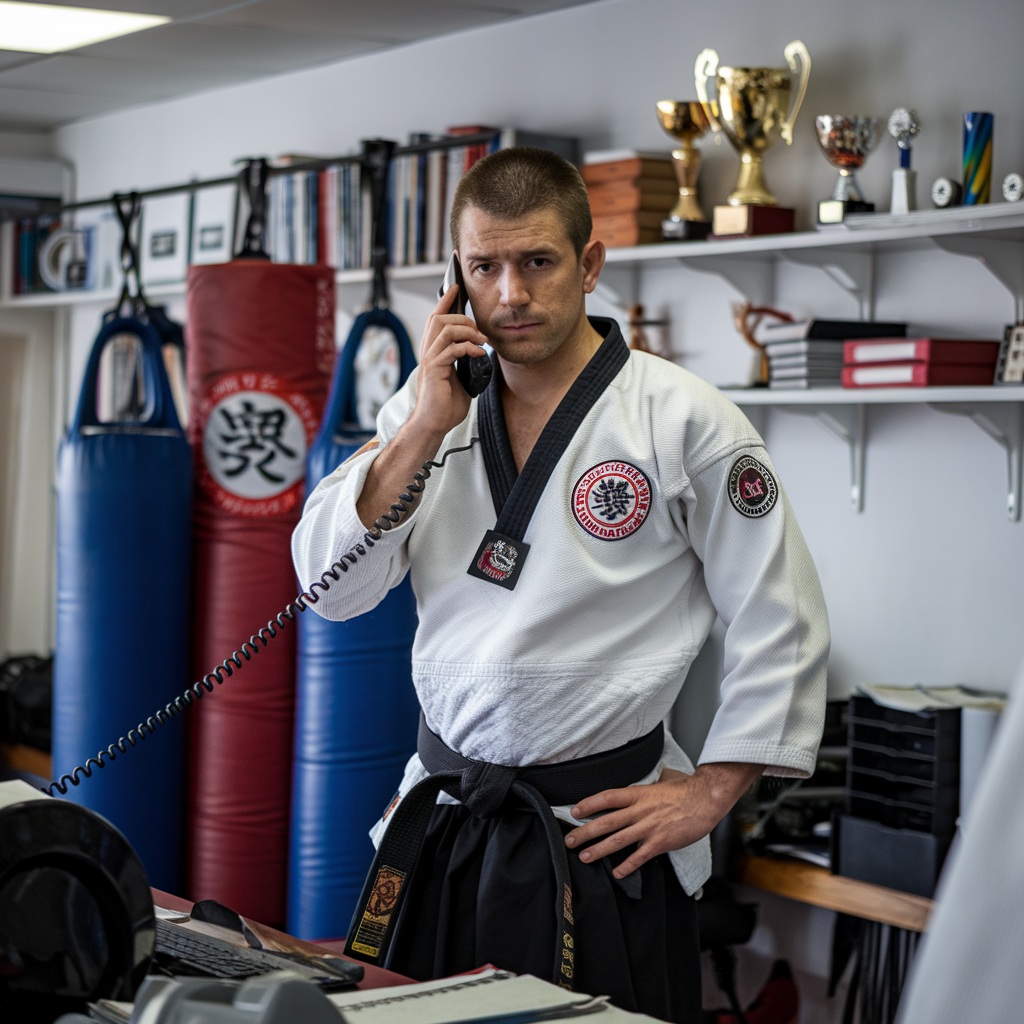
Customer complaints can sometimes feel like an aggressive attack, but instead of meeting them with resistance, agents can apply the principles of Aikido to guide conversations toward positive outcomes. Aikido, a Japanese martial art, focuses on blending with an opponent’s energy and redirecting it rather than fighting against it. At Call Care Pro, we believe these techniques can help agents turn complaints into solutions while maintaining harmony with customers.
Staying Centered: Remaining Calm Under Pressure
Aikido practitioners are trained to remain calm and balanced, no matter how intense the situation. This ability to stay centered allows them to control the outcome of an encounter without becoming overwhelmed. In customer service, this principle translates to keeping composure when dealing with frustrated or irate customers. Agents who react emotionally risk escalating the situation, while those who remain calm can steer the conversation toward a constructive resolution.
One effective way to stay centered is by practicing active listening. When customers feel heard, they are less likely to remain defensive or aggressive. Instead of preparing a response while the customer is still talking, agents should focus entirely on understanding the concern before formulating a solution.
Redirecting Negative Energy
In Aikido, rather than blocking an attack head-on, practitioners use their opponent’s force to redirect it into a controlled movement. Similarly, customer service agents can acknowledge a customer’s frustration and shift the conversation toward problem-solving. Rather than responding with statements that sound dismissive, such as, “That’s not our policy,” agents can use responses that acknowledge the issue while leading toward resolution: “I understand your concern. Let’s work together to find the best way to resolve this.”
By validating the customer’s emotions and immediately presenting a constructive path forward, agents can redirect negativity into a more productive conversation. This approach prevents unnecessary confrontation and helps build rapport between the agent and the customer.
Using Empathy as a Defensive Technique
Aikido is not about overpowering an opponent but rather guiding them toward a peaceful resolution. In customer service, empathy is a powerful tool for diffusing tension. When an agent shows genuine concern for the customer’s frustration, it helps soften the customer’s stance.
Empathy can be demonstrated in several ways:
- Mirroring the customer’s emotions: If a customer expresses disappointment, an agent might say, “I completely understand why you’re upset. I would feel the same way in your situation.”
- Validating concerns: Letting the customer know their feelings are justified can prevent further escalation.
- Offering solutions rather than excuses: Instead of saying, “There’s nothing we can do,” agents can say, “Here’s what I can do to help.”
Flowing with the Conversation
Aikido movements are smooth and adaptable, allowing practitioners to flow with their opponent’s energy rather than resisting it. Similarly, customer service interactions should be fluid, adapting to the customer’s tone and concerns while steering the conversation toward resolution.
Rigid scripts and robotic responses can make customers feel unheard. Instead, agents should focus on a flexible approach that adjusts to the unique dynamics of each conversation. Asking open-ended questions like, “How can I best assist you today?” keeps the interaction constructive and solution-oriented.
Deflecting Conflict Without Confrontation
Aikido practitioners use subtle shifts in movement to neutralize attacks without engaging in direct conflict. Customer service agents can apply this technique by staying professional and avoiding confrontational language, even if a customer is aggressive.
For example, if a customer blames the company for an issue, instead of responding defensively, an agent could say:
- Confrontational response: “That’s not our fault. You should have read the terms.”
- Aikido-inspired response: “I see where the misunderstanding happened. Let’s go over the details together and find a way to resolve this.”
This approach keeps the conversation productive while avoiding unnecessary conflict.
Anticipating and Preventing Escalations
Aikido teaches practitioners to read their opponent’s movements and anticipate their next action. In customer service, recognizing early signs of frustration or confusion allows agents to address issues before they escalate.
Some key indicators to watch for include:
- A change in tone or volume
- Repeated complaints about the same issue
- Short or abrupt responses
By addressing concerns proactively—before they turn into complaints—agents can maintain control of the conversation and keep it moving toward resolution.
Finding Win-Win Solutions
Aikido teaches that true victory comes from resolving conflict without harm. In customer service, the goal is not just to “win” the conversation but to find a solution that satisfies both the customer and the company. Offering alternatives, providing clear explanations, and ensuring the customer leaves the interaction feeling valued all contribute to a successful resolution.
For example, if a customer requests a refund that is against company policy, instead of outright denying the request, an agent can offer a compromise:
- “While we can’t offer a full refund, I’d be happy to provide you with store credit or a discount on your next purchase.”
This way, the customer still feels acknowledged and leaves the conversation with a positive impression.

Practicing Aikido-Inspired Customer Service Techniques
Agents can incorporate Aikido principles into their daily interactions through training and practice. Some ways to apply these techniques include:
- Role-playing scenarios to practice redirection and de-escalation strategies.
- Breathing exercises to maintain composure under pressure.
- Empathy training to enhance emotional intelligence and customer rapport.
The Impact of an Aikido Approach on Customer Satisfaction
Adopting an Aikido mindset in customer service doesn’t just benefit agents—it enhances the entire customer experience. When customers feel heard, respected, and guided toward a solution, they are more likely to remain loyal to a brand. Additionally, agents who practice these techniques are less likely to experience burnout, as they learn to handle difficult conversations with less stress and frustration.
Conclusion: The Aikido Approach to Customer Service
By applying Aikido’s principles—remaining calm, redirecting negativity, showing empathy, and adapting to conversations—customer service agents can handle complaints more effectively and turn conflicts into opportunities for customer satisfaction. At Call Care Pro, we emphasize using these techniques to create positive customer experiences.
Want to learn how Call Care Pro can improve your customer interactions? Contact us today!

